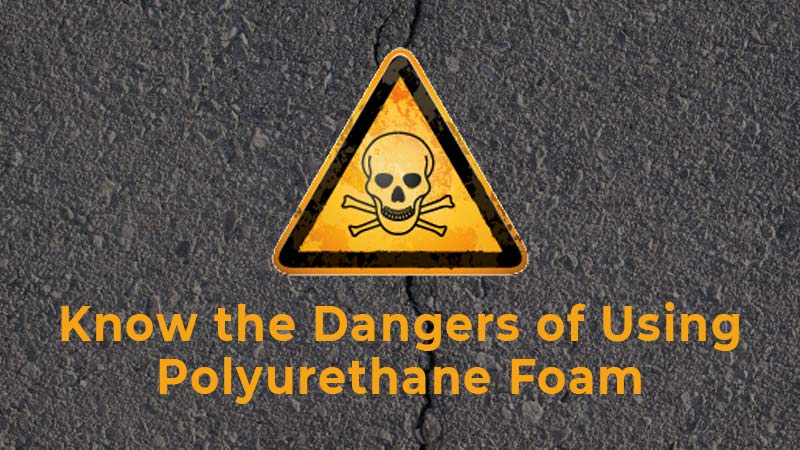Facts about Polyurethane Foam
There has been quite a bit of “buzz” about polyurethane form as a substitute for cementicious grout. Before you jump on that bandwagon, we would like to share some vital information about polyurethane foam that should change your mind:
Check out:
- Slab-Jacking Truth and Facts comparing Polyurethane Foam to Portland Cement for Slab Jacking. Sources for this information comes from: www.epa.gov, www.osha.gov, www.nist.gov, www.cdrecycling.org.
- This report by 303News of Denver, Colorado about The Alleged Dangers of Polyurethane Concrete Raising.
- Video of the burning danger.
Polyurethane foam is a byproduct processed from crude oil. Main ingredients are polyois and diisocyanate, both of which are identified as carcinogens and listed as Toxic Substances by EPA. Other ingredients and exposure to its contaminants toluene diisocyanate, methylene chloride, hydrogen cyanide, Iscyanates are known neurotoxins or carcinogens causing cancer in animals. Polyurethane (even best foam) breaks down in 10-12 years under normal conditions.
Facts about Cementicious Grout
Let’s look at the claims made about polyurethane and compare them to the facts about cementicious grout.
| Polyurethane Claimed Advantages | Certified Non-Shrink Cementicious Grout |
|---|---|
| Excellent coverage within 1/32 of an inch | Cement grout can meet or exceed coverage within 1/32 at higher psi. |
| Up to 250 psi compressive & tensile strength | Cement grout offers compressive & tensile strengths of 600-5000 psi |
| Will not shrink | Will not shrink, in addition admixtures strengthens final grout placement |
| 95% closed cell foam repels water | Cement grout is not a petroleum based material and repels water |
| Doesn’t stress the concrete due to uneven coverage | Pressurized cement grout at proper slumps will not stress any concrete |
| Small injection holes of 5/8 inch diameter | Core drilled Injection holes can be repaired using same core plug |
| Extreme lifting capabilities | Meets or exceeds lifting capabilities of polyurethane |
| Lightweight – 125-250 lbs per yard will not overburden soil | Research indicates slab deflection breaks down foam polyurethane |
| Used by DOTs for over 30 years | Cement grout has been used for over 60 years |
| Sub-seals floors | Cement grout sub-seals floors at higher compressive strengths |
| Waterproofs walls | Portland cement grout and bentonite waterproofs walls. |
| Cost effective | Portland cement grout is a fraction the cost of polyurethane |
| Eco-friendly | Portland Cement grout can be added to the recycling process with no additional cost or threat to the environment |
Polyurethane is a petroleum-based, toxic, sticky material that adheres to the concrete, rendering it unacceptable at the recycling centers. At some point, all concrete must be replaced. Concrete that has polyurethane attached to it will not be accepted at concrete recycling centers. It must be disposed of at a toxic waste facility.
The Construction & Demolition Recycling Association states that “no concrete will be allowed for processing that contains hazardous materials or contaminates“. When concrete is removed, it will be the owners responsibility and cost to safely remove and dispose of the toxic polyurethane foam.


